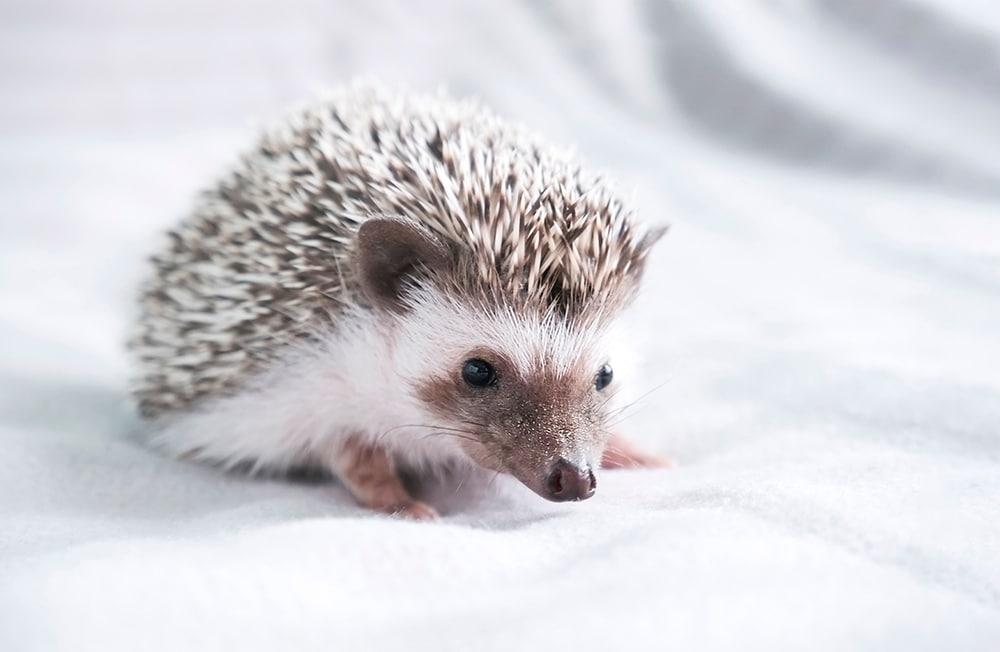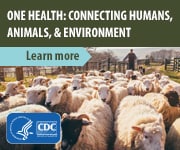Small Mammals
Small mammals commonly kept as pets can include rodents like rats, mice, hamsters, gerbils, and guinea pigs or other small mammals like hedgehogs, sugar gliders, and rabbits.
Owning a small mammal is a big responsibility, even though the animal itself might be tiny. If you decide that a small mammal is the right pet for you, it’s important to learn how to properly care for your pet. The right care can help keep you and your pet safe from disease. Get routine veterinary care for your pet and follow the tips in the Healthy People section to help prevent getting sick from touching, petting, or owning a small mammal.
Read below to learn about diseases that can be spread by small mammals and visit the Healthy People section to learn about staying healthy around small mammals.
Campylobacter are bacteria that can make people and animals sick with a disease called campylobacteriosis. This type of bacteria can infect rodents like hamsters, guinea pigs, and gerbils.
How it spreads: Campylobacter most often spread between animals and people through feces (poop), contaminated food or water, or the environment. People can become infected if they don’t wash their hands after touching an infected animal or its poop, food, toys, or habitats.
Who is at risk: Anyone can get a Campylobacter infection, but children younger than 5 years old, adults 65 years and older, and people with weakened immune systems are more likely to get severe illness.
Signs in small mammals: Some infected animals might have diarrhea but others might not show any signs of illness.
Symptoms in people: People can have diarrhea (often bloody), fever, and stomach cramps. The diarrhea may be accompanied by nausea and vomiting. Symptoms usually start within 2–5 days after infection and last about 1 week.
Giardia is a parasite found on surfaces or in water, food, or soil that has been contaminated by poop of an infected person or animal. This parasite is uncommon among small mammals but can infect chinchillas, rats, and mice.
How it spreads: You can get giardiasis if you swallow Giardia germs. Giardia spreads easily and can spread from person to person or through water, food, surfaces, or objects contaminated with poop from infected people or animals.
Who is at risk: The risk of getting Giardia from small mammals is low. The exact type of Giardia that makes people sick is usually not the same that infects animals. Anyone can get Giardia, but the following groups have a higher risk:
- People in childcare settings
- People who are in close contact with someone who has the disease
- Travelers within areas that have poor sanitation
- People who have contact with poop during sexual activity
- People who drink untreated water from springs, lakes, or rivers
- Swimmers who swallow water from swimming pools, hot tubs, splash pads, or untreated recreational water from springs, lakes, or rivers
- People who get their household water from a shallow well
- People with weakened immune systems
- People who have contact with infected animals or animal environments contaminated with poop
Signs in small mammals: Infected animals often have diarrhea, gas, greasy poop, and dehydration. Some pets don’t show any signs of illness.
Symptoms in people: Infected people often have diarrhea, greasy poop, dehydration, abdominal cramps, nausea, and vomiting. Symptoms usually begin 1 to 2 weeks after infection and last for 2 to 6 weeks. Some people don’t have any symptoms.
Leptospirosis is a bacterial disease that can affect people and animals. Many kinds of animals can carry the bacteria in their urine, including rodents like mice and rats.
How it spreads: The bacteria that cause leptospirosis spread through the urine of infected animals, which can get into water or soil and survive there for weeks to months. Some animals that can spread leptospirosis include cattle, pigs, horses, dogs, rodents, and wild animals. People get infected through contact with urine or other body fluids (except saliva) from infected animals, or through contact with water, soil, or other materials (such as animal bedding) contaminated with urine from infected animals.
Who is at risk: Leptospirosis occurs worldwide, but is most common in tropical and subtropical climates. It has been associated with contact with infected animals and activities in contaminated lakes and rivers, such as swimming, wading, kayaking, and rafting. It is also a risk for people in certain jobs that involve contact with animals or their waste, like farmers, sewer workers, slaughterhouse workers, and veterinarians.
Signs in small mammals: Rodents infected with leptospirosis may not show any signs of illness.
Symptoms in people: People with leptospirosis might not have any symptoms, but those who do will usually become sick within 2 days to 4 weeks of exposure and can have high fever, headache, chills, muscle aches, vomiting, jaundice, conjunctivitis (red eyes), abdominal pain, diarrhea, or a rash. A small number of people with leptospirosis can have more severe disease, such as liver and kidney failure, hemorrhagic pneumonia, and even death. Early treatment with appropriate antibiotics is important and can reduce the duration and severity of illness.
Lymphocytic choriomeningitis is a rare viral disease that is spread by rodents, mainly the common house mouse. It can also infect hamsters, guinea pigs, rats, and other small rodents.
How it spreads: LCMV spreads through contact with the urine, poop, saliva, or bedding of infected rodents, especially in broken skin or the nose, eyes, or mouth. Rodent bites can also spread the virus. Pregnant people can spread the virus to their fetus.
Who is at risk: Anyone who comes in contact with infected rodents can become infected with LCMV, but most people won’t get seriously sick. Young children, pregnant people, and people with weakened immune systems are most at risk for severe disease. LCMV is especially dangerous for pregnant people, who can pass the infection to their fetus, which can cause serious birth defects.
Signs in small mammals: Infected rodents often look healthy or have small decreases in activity and appetite. Later, these infected animals may show weight loss, poor hair coat, or hunched posture, and some may die.
Symptoms in people: LCMV infections are rare in people. Infected people might have fever, stiff neck, loss of appetite, muscle aches, headache, nausea, and vomiting. LCMV infection also can affect the brain and spinal cord during a second phase of illness. Symptoms usually appear 1 to 2 weeks after exposure. LCMV infection during the first trimester of pregnancy may result in fetal death or miscarriage, while in the second and third trimesters, birth defects can develop in the fetus.
Sarcoptic mange is a parasitic skin disease caused by tiny mites. Guinea pigs commonly get these mites, but they are not the same type of mites that cause scabies in people.
How it spreads: Guinea pigs can get mange through close contact with animals infested with mites, or contaminated bedding or other materials. Trixacarus caviae mites cannot infest a person or spread from person to person, but they can affect a person who has close contact with an infested guinea pig. The mite will not be able to reproduce on the person, though, and will die on its own in a couple of days.
Who is at risk: Trixacarus caviae mites can affect anyone who handles an infested animal.
Signs in guinea pigs: Infected animals often have hair loss, itching, and skin irritation.
Symptoms in people: People cannot become infested with the animal versions of sarcoptic mange. However, contact with an infested animal could cause temporary skin irritation.
Rat-bite fever (RBF) is a rare disease spread by rats that is caused by Streptobacillus moniliformis and Spirillum minus bacteria. It is also known as Haverhill fever. Other rodents, like mice, guinea pigs, and gerbils, can also carry and spread the bacteria.
How it spreads: The bacteria that cause RBF spread through bites or scratches from infected rodents. People also can get sick through contact with rodent urine or poop or through contaminated food or water. Rat-bite fever does not spread from person to person.
Who is at risk: People at higher risk for rat-bite fever include those who have pet rats or other rodents in their home; people who use feeder rodents; and people who work with rats or other rodents. Children 5 years old or younger, pregnant people, and people with weakened immune systems are most at risk for severe disease.
Signs in rodents: Infected rodents might have arthritis, skin infections, pneumonia, or swollen lymph nodes. Some infected rats might look healthy.
Symptoms in people: Infected people can have fever, vomiting, headache, muscle pain, joint pain or swelling, and a rash. If left untreated, RBF can spread to the joints, liver, heart, lungs, brain, and blood.
Ringworm is fungal disease that can affect the skin, hair, or nails of people and animals.
How it spreads: Ringworm spreads through contact with an infected person or animal’s skin, or from the environment.
Who is at risk: Anyone can get ringworm.
Signs in small mammals: Infected animals, usually guinea pigs, might have circular areas of hair loss and crusts anywhere on their body. Infected rodents and rabbits might have areas with mild hair loss and reddened, irritated, itchy or flaky skin.
Symptoms in people: Ringworm infections in people are usually itchy and can appear on almost any part of the body. Redness, scaling, cracking of the skin, or a ring-shaped rash may occur. If the infection is on the scalp or beard, hair may fall out. Infected nails can become discolored, thick, or could crumble.
Salmonella are bacteria that can make people and animals sick with a disease called salmonellosis.
How it spreads: People can get infected with Salmonella by eating contaminated food, or through contact with an animal or its poop, food, habitat, or items like toys and food dishes. People can get sick if they don’t wash their hands after touching their small mammal or anything in its environment and then touch their mouth and swallow Salmonella germs.
Who is at risk: Anyone can get sick from Salmonella, but children younger than 5 years old, adults 65 and older, and people with weakened immune systems are more likely to get severe illness.
Signs in small mammals: Salmonella bacteria live in the gastrointestinal tracts of healthy rodents and small mammals. Salmonella infection usually doesn’t make these animals sick.
Symptoms in people: Most people infected with Salmonella have diarrhea, fever, and stomach cramps. Symptoms usually start 6 hours to 6 days after swallowing the bacteria. Most people recover without treatment after 4 to 7 days.
Seoul virus is a type of hantavirus. Seoul virus, like other species of hantavirus, is spread by rodents (specifically the Norway rat and the black rat).
How it spreads: People can get infected with Seoul virus by breathing in tiny particles of rodent urine, poop, or saliva. Seoul virus can also spread through bites from infected rats or by consuming food contaminated by infected rats.
Who is at risk: Anyone can get Seoul virus, but people who handle or are around rodents are more at risk. Children 5 years old or younger, pregnant people, and people with weakened immune systems are more likely to get severe illness from Seoul virus.
Signs in rodents: Rats infected with Seoul virus don’t show any symptoms of disease.
Symptoms in people: Infected people might have fever, headache, muscle aches, vomiting, diarrhea, abdominal pain, dizziness, and chills. However, some people do not get symptoms at all. Symptoms usually appear 1 to 2 weeks after exposure. Rarely, it may take up to 8 weeks to develop symptoms.
How to stay healthy around small mammals
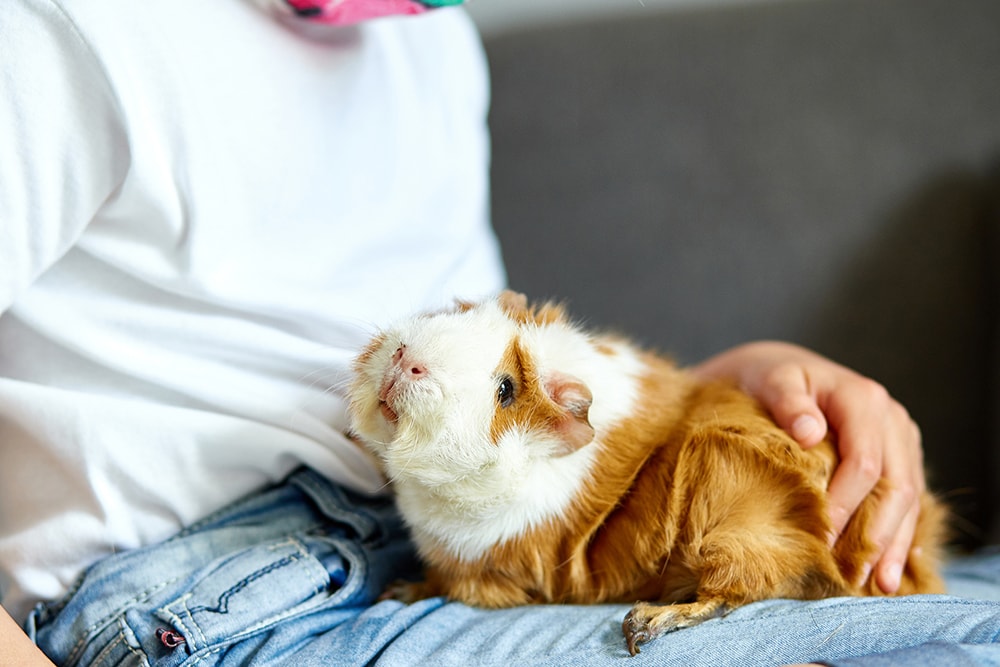
Before buying or adopting a small mammal, make sure it is the right type of pet for your family. Talk to an exotic animal veterinarian about the right type of pet for your lifestyle and needs. Be aware that even when they look clean and healthy, small mammals can sometimes carry germs that can make people sick. Some people are more likely to get a severe illness, including children younger than 5 years old, adults 65 and older, and people with weakened immune systems. Pregnant people should not handle pet rodents, when possible, because of the risk for lymphocytic choriomeningitis virus (LCMV).
Read the tips below and consider whether small mammals are the right fit for your family.
Wash your hands
You don’t have to touch a small mammal to get sick from the germs it carries. Pet food, equipment, and habitats can be contaminated with Salmonella and other germs.
Wash your hands with soap and running water:
- After handling small mammals or their bedding, urine, poop, or other body fluids.
- After touching or cleaning your pet’s equipment (for example, cages, enrichment, bedding, water, food).
- Supervise handwashing for children.
Use hand sanitizer if soap and water are not readily available.
Safely care for your pet
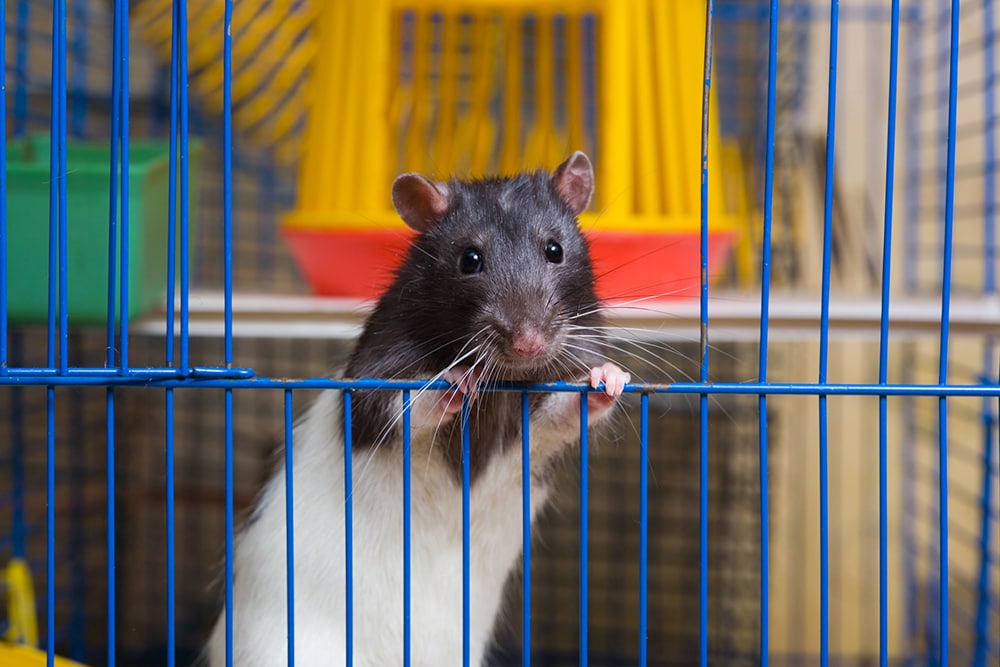
- Keep small mammals and their equipment out of the kitchen or anywhere that food is prepared, stored, served, or eaten.
- Don’t allow pet small mammals to roam freely throughout a home or living area. Supervise your pet when it is outside of its habitat to prevent accidents and contamination.
- Don’t kiss, snuggle, or hold small pets close to your face, and don’t touch your mouth after handling small mammals.
Safely clean your pet’s habitat
- Don’t cross-contaminate. Never use food preparation areas to clean small mammal habitats or equipment.
- Clean pet supplies outside of your home, if possible.
- If you clean supplies outside, clean them away from gardens or other sources of food or drinking water.
- If cleaning outside the home isn’t possible, clean them in a laundry sink or bathtub and clean and disinfect after.
- If you clean supplies in the bathtub, thoroughly clean and disinfect the area before use by others.
Prevent bites and scratches
Bites from small mammals can be dangerous because they can spread germs. Bites and scratches can be serious injuries and sometimes can become infected.
How to prevent bites and scratches
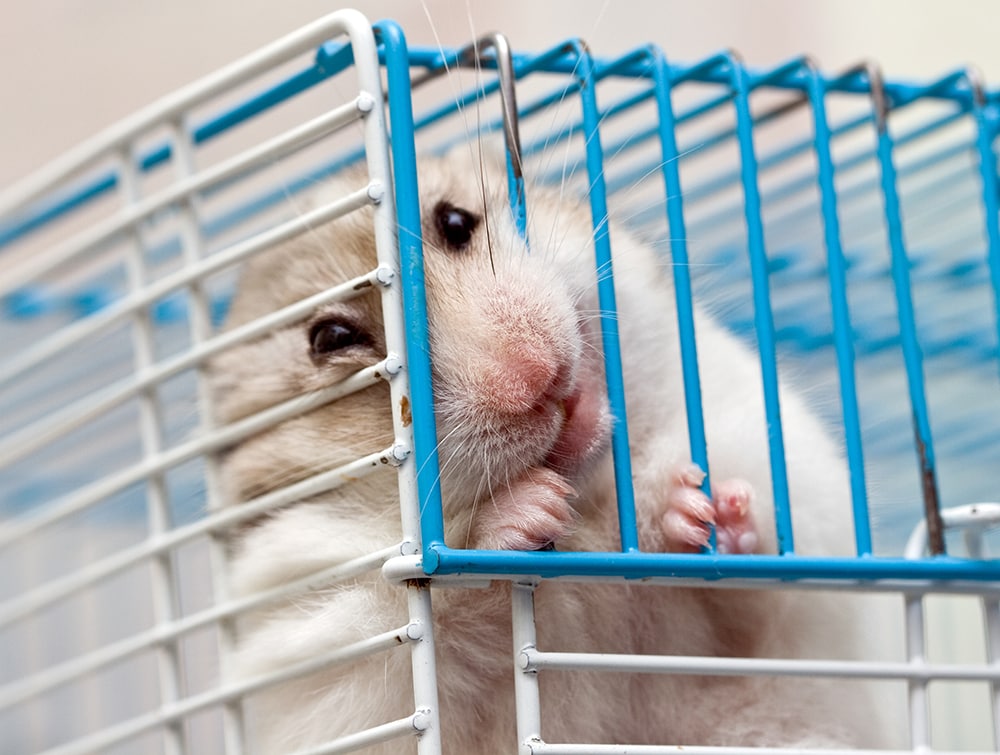
- Don’t kiss or hold small mammals close to your face. This might frighten them and increase your chances of being bitten.
- Make sure the animal sees you before you pick it up. If an animal is surprised, it might bite out of fear.
- Be cautious with unfamiliar animals, even if they seem friendly.
What to do if you are bitten or scratched by a small mammal
Pet bites and scratches can spread germs, even if the wound does not seem deep or serious.
If a bite from a small mammal breaks the skin, you should:
- Wash the wound with warm soapy water immediately. Even healthy pets can carry germs.
- Seek medical attention, especially if
- Your pet looks sick or is acting unusual.
- The wound is serious (the bleeding doesn’t stop, unable to move, extreme pain, muscle or bone is showing, or the bite is over a joint).
- The wound or site of injury becomes red, painful, warm, or swollen. (especially if the person bitten is younger than 5 years old, 65 or older, pregnant, or has a weakened immune system.)
- It has been more than 5 years since your last tetanus shot.
- Your pet is housed outdoors or has been in contact with wildlife. Small mammals kept outside may be at risk for rabies.
If the animal becomes sick or dies after biting a person, call a veterinarian.
If you or other people in your household get sick shortly after purchasing or adopting a small mammal, tell your healthcare provider about your new pet.
Keeping your small mammal healthy helps to keep you and your family healthy. To learn how to stay healthy around small mammals, visit the Healthy People section.
Before choosing a small mammal
Think about the people in your household. Small mammals can spread germs to people, especially children younger than 5 years old, pregnant people, people 65 and older, and people with weakened immune systems.
- Research and learn how to properly care for small mammals before buying or adopting.
- Find an exotic veterinarian in your area. Small mammals often require specialized care that all veterinarians may not provide.
- Ask your veterinarian about the proper food, care, environment, and other needs of the specific pet you are interested in choosing.
- Check your state, local, and property laws before choosing a small mammal. Some small mammals might not be allowed in apartments or rental homes, and some are not legal in certain states.
How to choose a small mammal
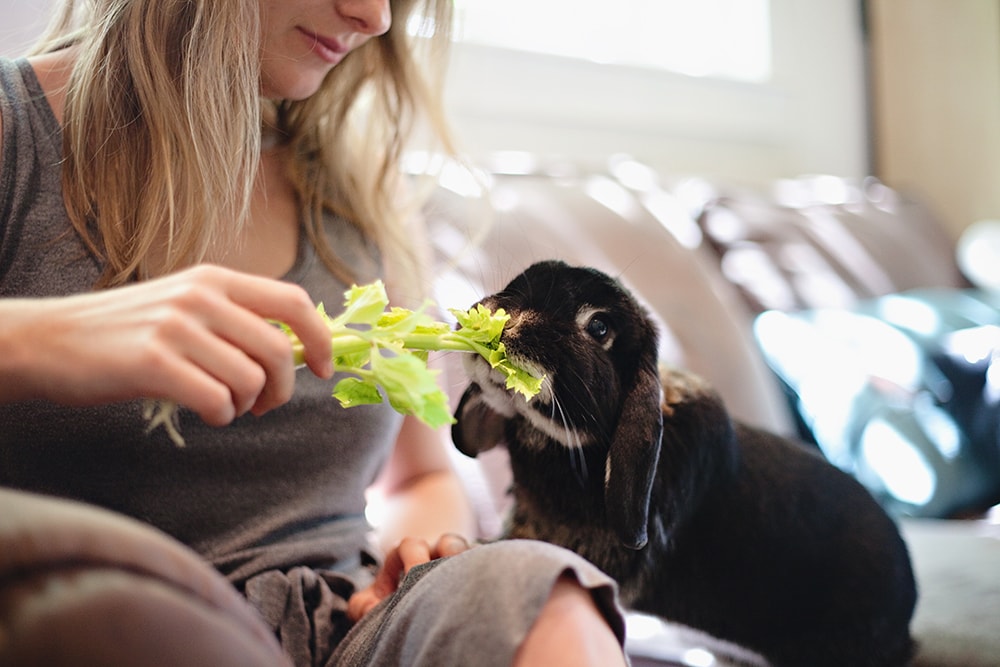
- Choose a pet whose attitude, size, and activity level match the needs of your family. Consider your home environment and time available to spend with your pet. If you want a pet that can be frequently handled and petted, do not choose a shy or aggressive pet.
- Pick a pet that is bright, alert, and active. Small mammal pets should have shiny, clean fur.
- Do not choose a pet from a cage where any other animals look sick. Signs of illness in a small mammal include appearing sluggish or depressed, diarrhea, abnormal breathing, and runny nose or eyes.
- Do not keep wild animals as pets.
- Within a week after getting your pet, take it to the veterinarian for a check-up.
- If your pet becomes sick or dies soon after purchase or adoption, take it to the veterinarian and tell the pet store, breeder, or rescue organization about the pet’s illness or death. Consider waiting before purchasing or adopting another pet. Do not use the pet’s habitat until it has been properly cleaned and disinfected. These practices will help prevent the spread of disease.
How to house your small mammal pet
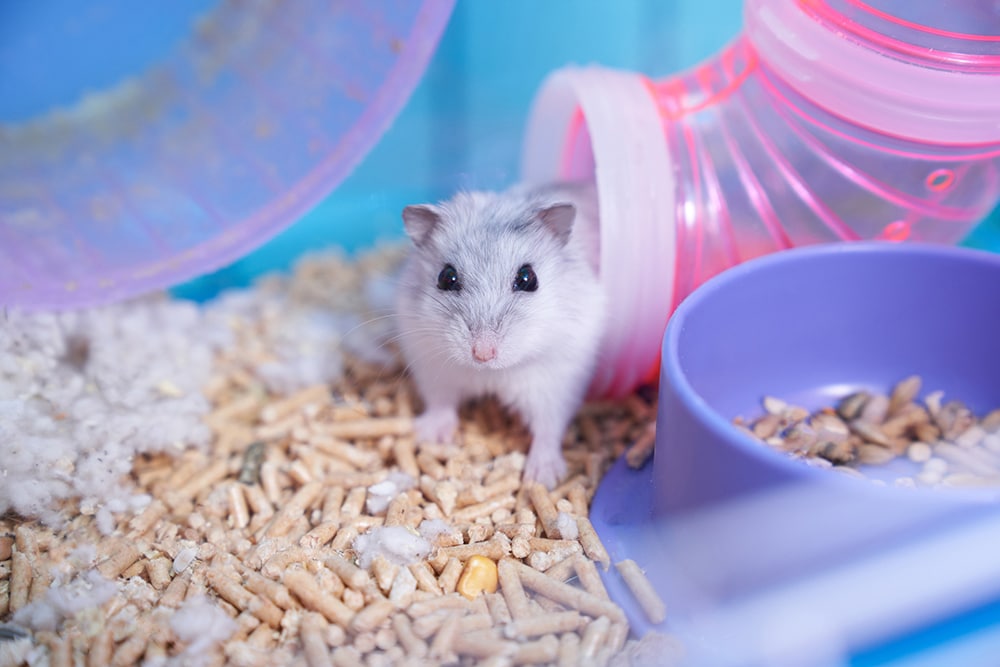
- Keep your pet in a habitat that can be securely closed and locked.
- Make sure your pet has fresh food and water every day.
- Secure enclosures to prevent wildlife and other animals from getting in.
- Provide appropriate items for enrichment (toys, mazes, exercise wheels). Ask your veterinarian about which items are right for your pet.
Monitor your pet’s health
Examine your small mammal daily, looking for any changes in activity level, appetite, or overall health. Specifically, look for:
- Sluggish or depressed behavior
- Dull fur or hair
- Loose poop
- Runny eyes or nose
- Abnormal breathing
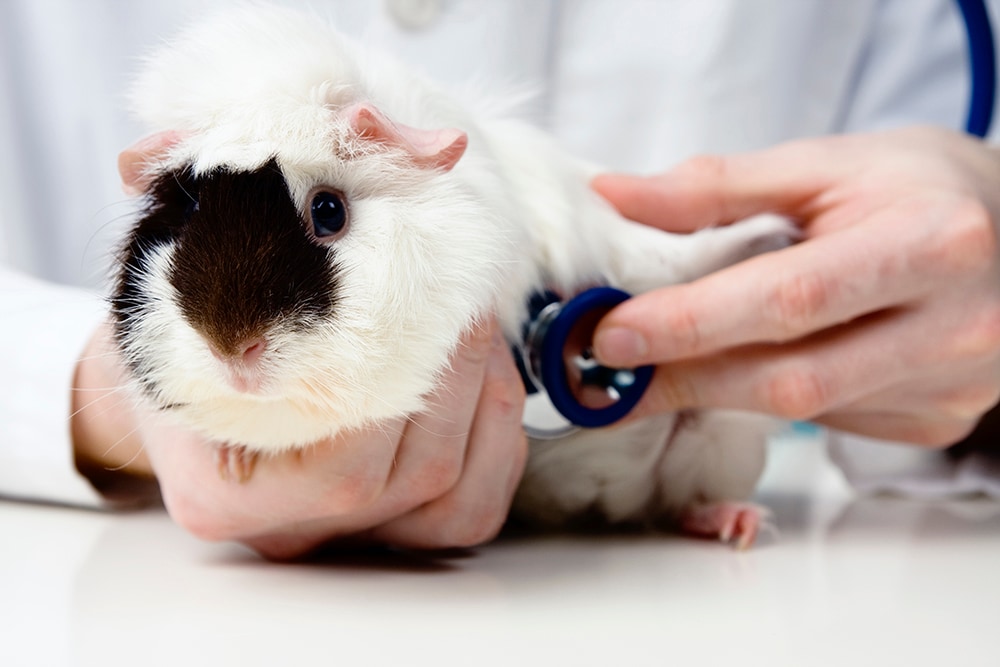
These signs could mean your pet is sick. If your pet seems sick or shows any of these signs, contact your veterinarian immediately.
To keep your pet as healthy as possible, visit a veterinarian for regular checkups. Veterinarians who focus on small mammal pets can provide extra guidance on caring for your pet.
Never release a pet into the wild. These animals are not adapted to live in the wild and they can damage the ecosystem. If you no longer want or cannot care for a pet, check with local or regional animal rescues, local animal control, veterinarians, pet shops, or state wildlife agencies to find out how to appropriately relinquish a small mammal pet.
Selecting and caring for a small mammal pet
- Selecting a Pet Rabbit
American Veterinary Medical Association (AVMA) - Selecting a Pet Rodent
American Veterinary Medical Association (AVMA)
Importing a small mammal
- Animal and Animal Product Import Information
S. Department of Agriculture, Animal and Plant Health Inspection Service (USDA/APHIS)
Staying healthy around small mammals
Visit the Healthy People section for information about staying healthy around reptiles and amphibians.
- 4 Tips to Stay Healthy Around Your Pet
Blog Post - How to Stay Healthy around Pets [PDF – 1 page]
Poster - Adopt these healthy pet habits [PDF – 1 page]
Poster - Stay Healthy Around Small Pets [PDF – 1 page]
Poster - Stay Healthy Around Animals! [PDF – 20 pages]
Coloring Book - Wash Your Paws! [PDF – 1 page]
8.5×11 poster - Wash Your Paws! [PDF – 1 page]
11×17 poster - Preventing Seoul Virus Infection in Pet Rats and People
Guidance and recommendations
- Compendium of Measures to Prevent Zoonotic Diseases Associated with Non-Traditional Pets
- Medscape: Illness Linked to Contact with Pets and Farm Animals
